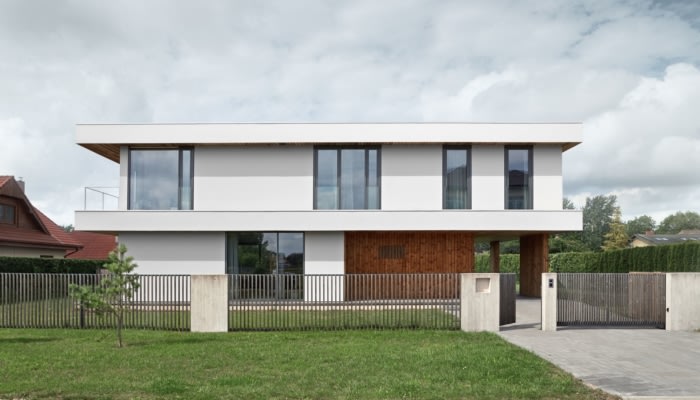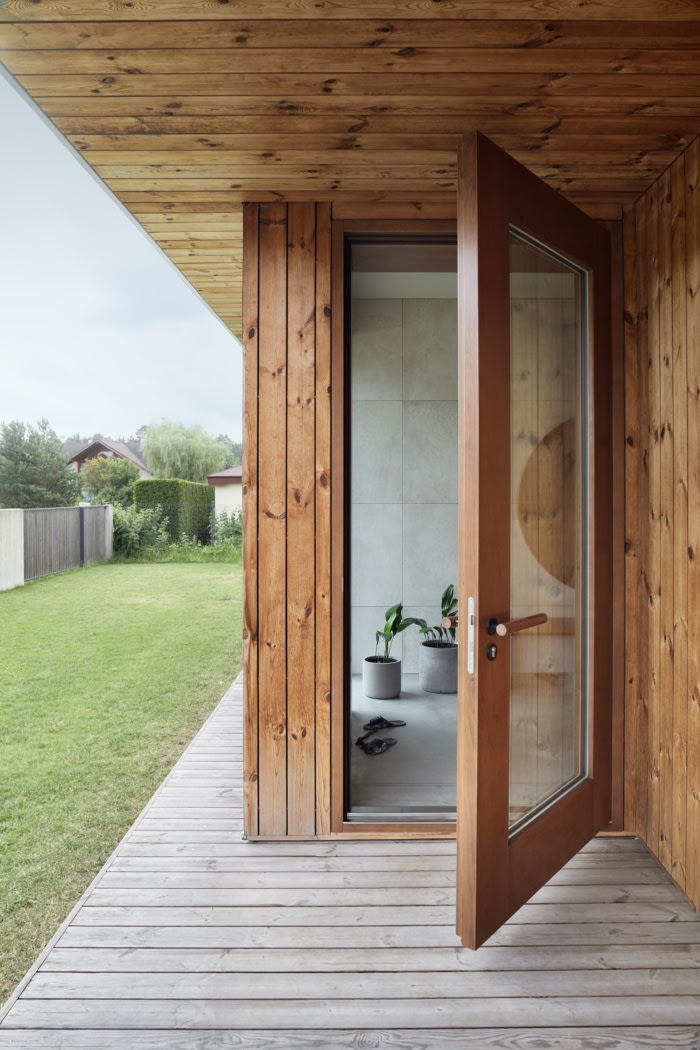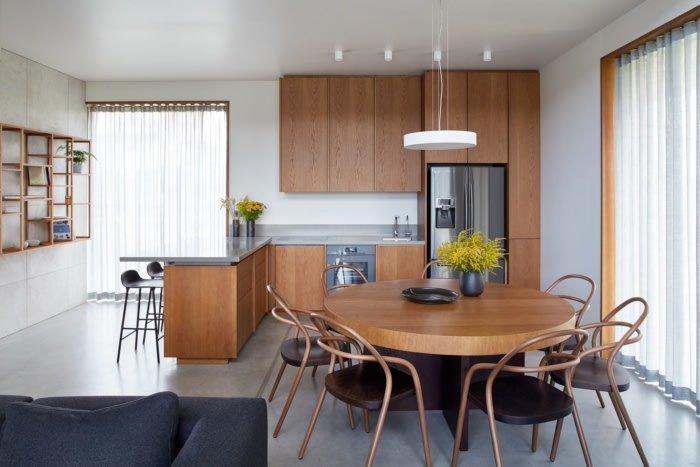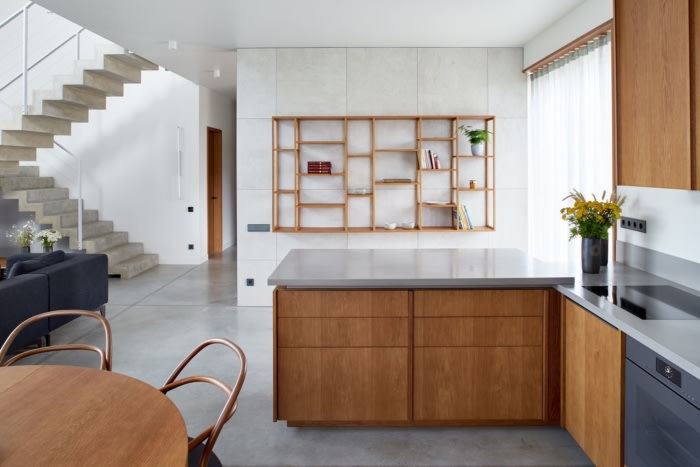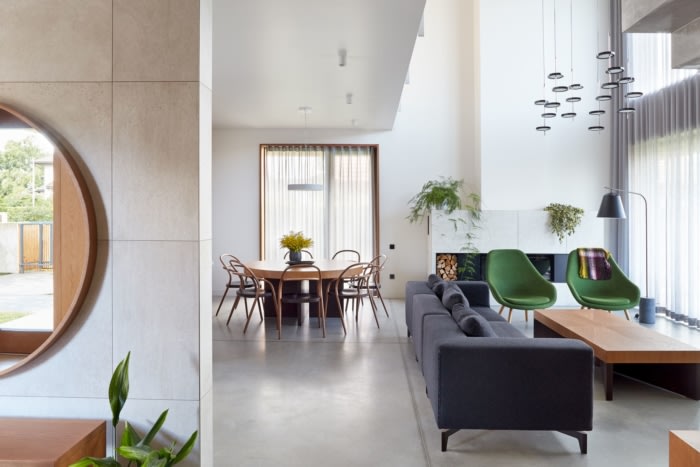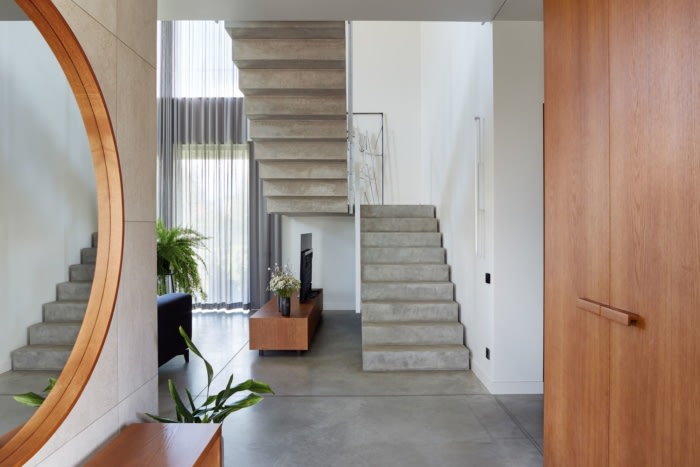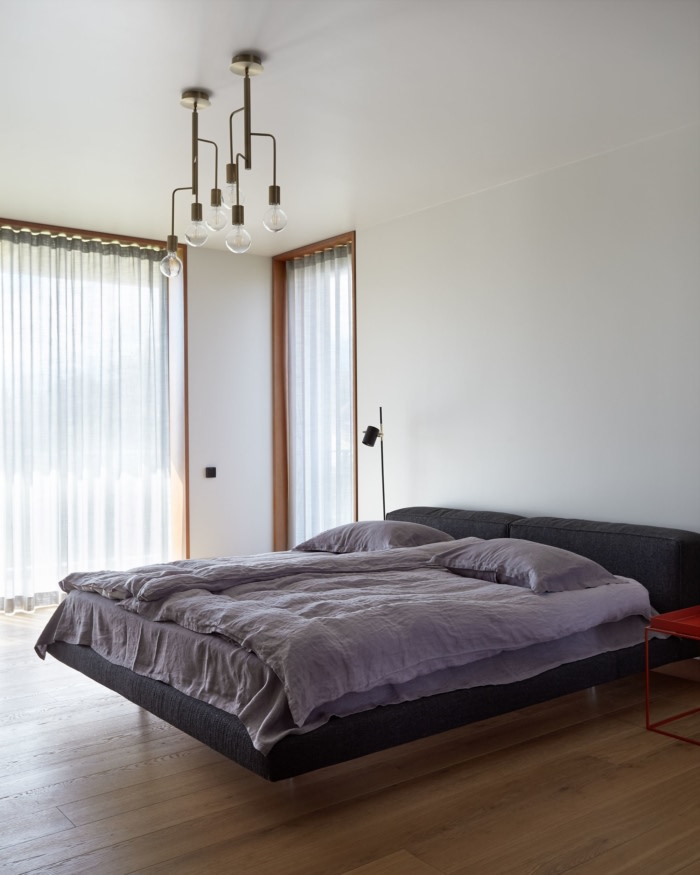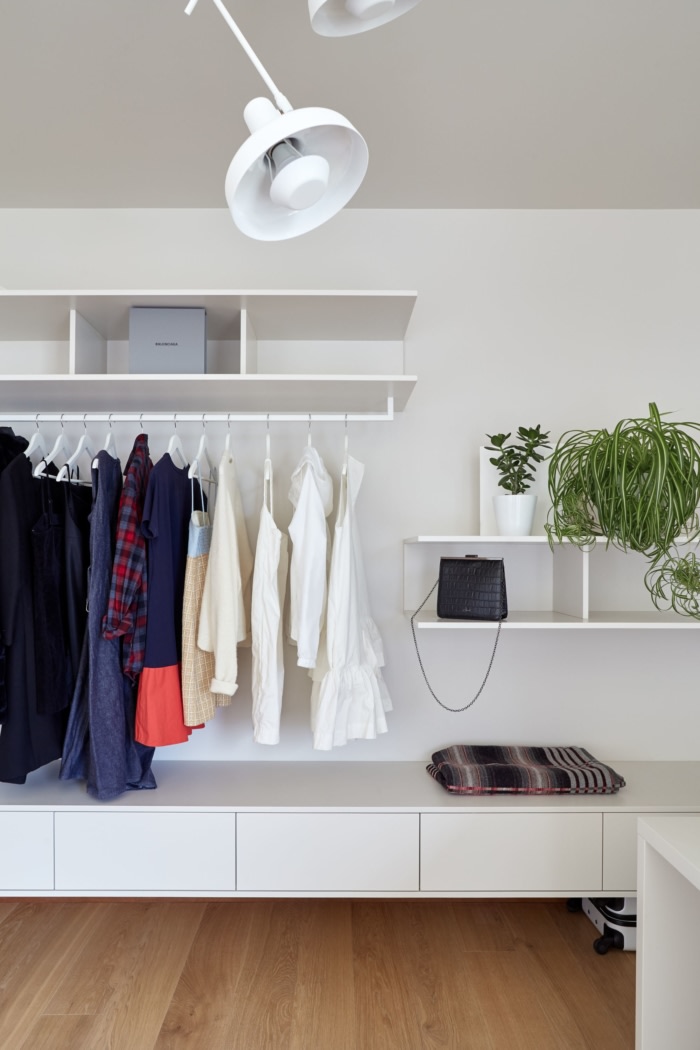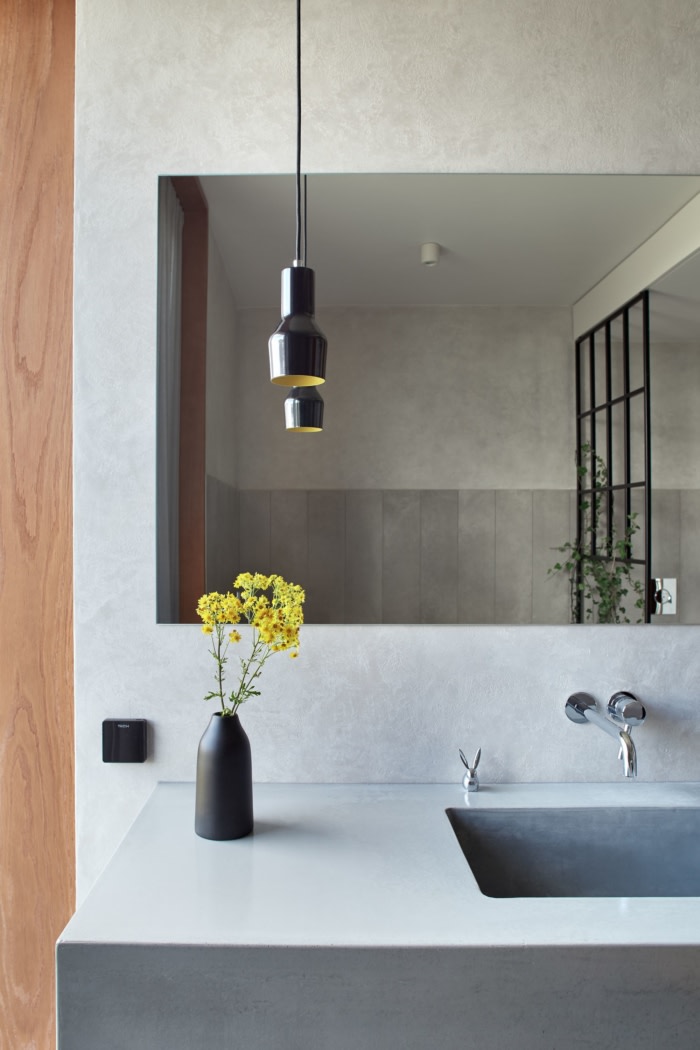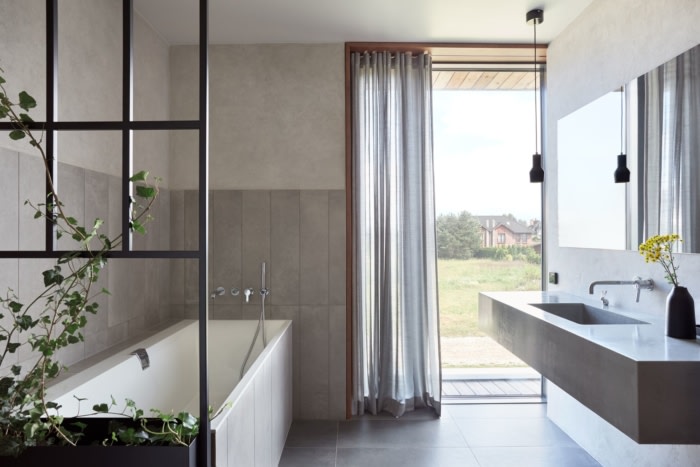Three Slabs House
GAISS has designed a house with a laconic volume defined by three horizontal slabs, a fully realized Latvian dwelling nestled in a suburb outside of Riga.
Beginning with a sketch on 2012 a slow project process has lead to a fully designed house with elaborated interior details and bespoke furniture pieces in 2020.
House is located in a suburb of Riga – a dense, recently built residential neighbourhood, where privacy and intimacy become important aspects for indoor space.
The house is characterized by its horizontality. The two-storey volume sits on a horizontal terrace slab on the ground. The middle slab forms a balcony towards the garden and a narrow roof towards the street front. The final line in the spatial composition of the house is the third slab – the roof. All three slabs have the same contour repeating vertically.
Light grey plaster planes are combined with natural heat-treated wood planks marking the entrance area and horizontal surfaces. Initially rich in colour the planks are going to fade and achieve natural greyness thus revealing the rhythm of time. Connections between the materials are exact and precise, without transitions. Horizontal slabs and vertical volumes relate sharply as they would be cutting through each other. Facade detailing is reduced to the minimum consisting of cool grey aluminium window frames and steel railing with almost invisible, subtle steel cables.
The main space expands through the house both horizontally and vertically. Containing kitchen, living room, dining area and stairs, it offers views towards the street, the neighbour on the South and the garden on the West. It rises through both floors connecting the rooms of the house and introducing the light through a double-height garden window. Large windows on opposite sides of the house allow a view through the building connecting the street front with the garden.
Private rooms located on the first floor are connected by an indoor balcony overlooking the double-height living room, and by an outdoor balcony stretching around the house. Every room has its direct connection with the outdoors either on the ground level or the balcony.
The interior atmosphere continues the character of the facades, acting mostly with relations between timber and concrete, and the geometry of planes.
Cool, dark grey continuous concrete floor on the ground level emphasizes the openness and the spaciousness of the house. Warm oak lines the window apertures, doors and bespoke furniture. The roughness of concrete contrasts with the smoothness of oak surfaces and the subtleness of steel details and railing. Grey, translucent curtains are used to adjust the intimacy inside the house, allowing a soft, diffused light to enter the spaces. The generous living room window has a double-storey height curtain emphasizing the scale of the living space.
Concrete stairs form a transition from the open living space towards private areas on the first floor. The stair landing functions as a micro gallery for art pieces created or owned by family members. Three bathrooms each have their different atmospheres. The guest bathroom on the ground floor has a dark colour palette with small black tiles on walls, concrete floor and a large openable mirror with a hidden window for fresh air. The upper level has two bathrooms – light, clean and delicate with large stone tiles for parents and grey concrete bathroom with black steel frame shelves for plants and towels, designed for the daughter.
Design: GAISS
Design Team: Arnita Melzoba, Kārlis Melzobs, Agnese Mālniece
Photography: Madara Gritāne


